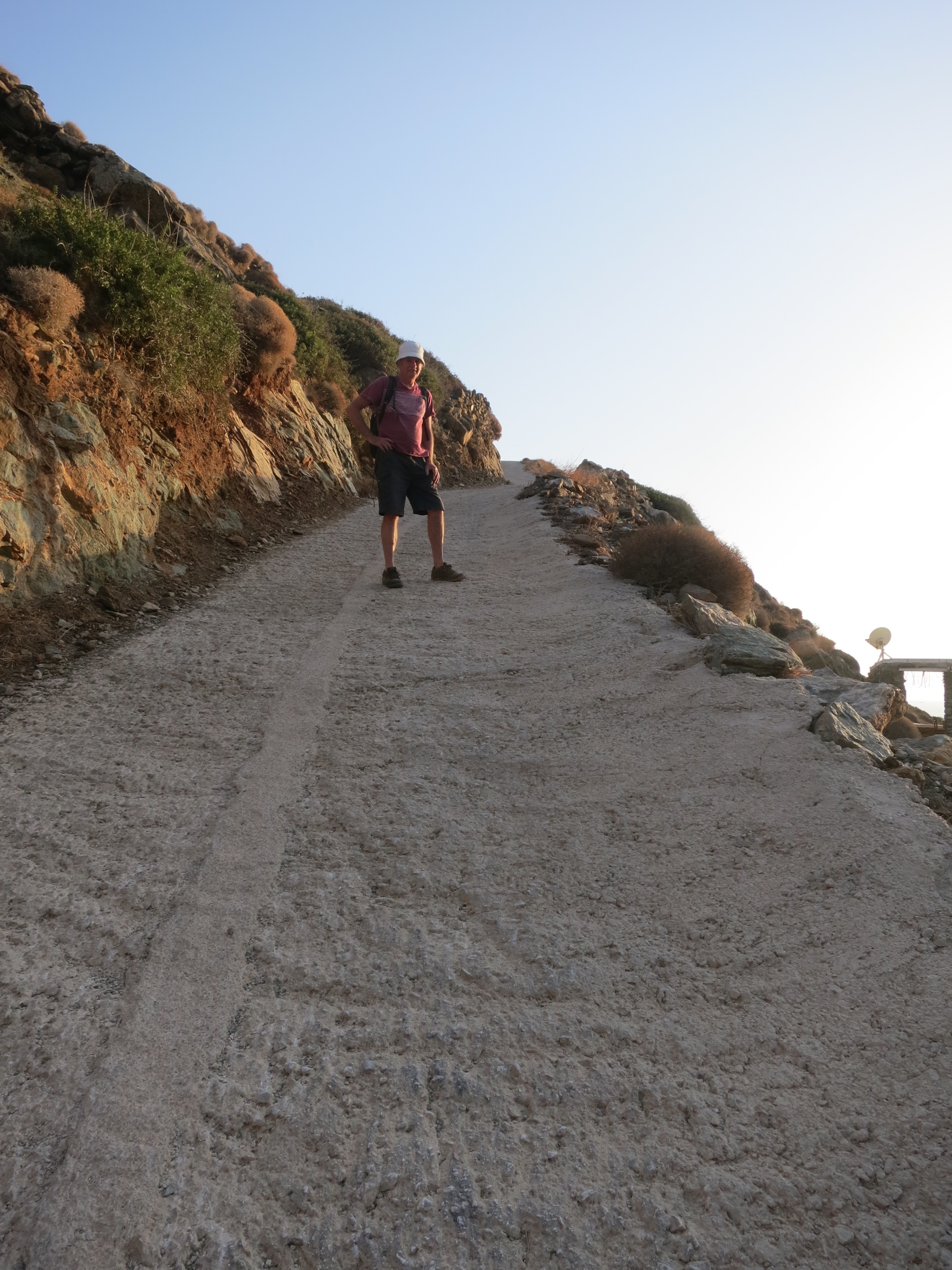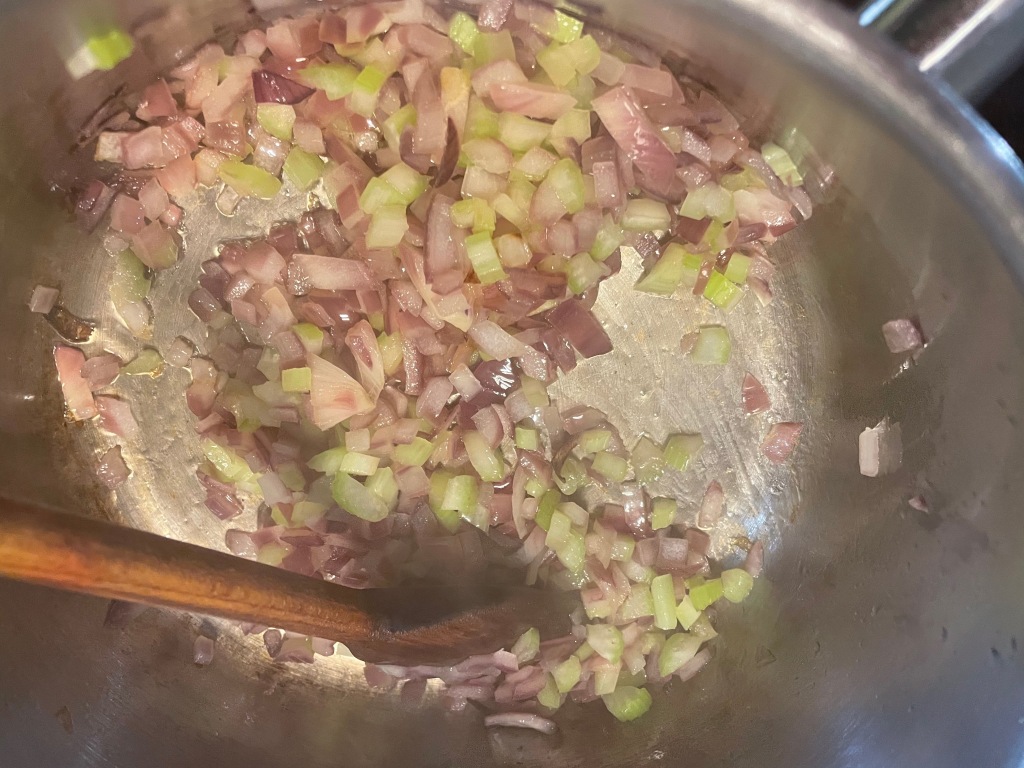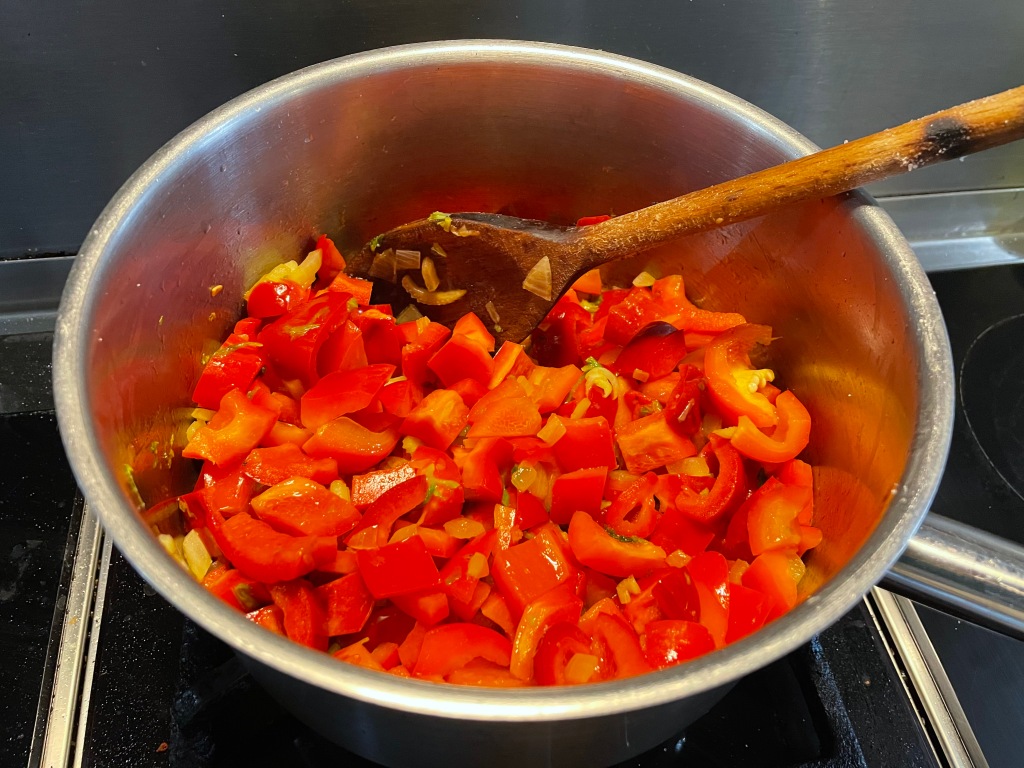Sifnos is one of the Cycladic islands in the Aegean Sea, it’s about 25kms long and 15kms wide and very hilly. It takes bit of effort to get there which is why this beautiful spot is not a mass tourist destination. The main town, Apollonia is in the centre of the island and the roads run down from there to little villages, fishing ports and deserted beaches.

The island also has plenty of tracks linking everywhere together which formerly would have been used by donkeys. There aren’t many donkeys these days, they seem to have been replaced by Suzuki Jimneys and similar little vehicles which are the only way to get down to many of the hamlets.

Sifnos tourism has a walking trail initiative, there are lots of way marked tracks to beautiful places. It’s mostly a case of what goes down, must come up – challenging trails with spectacular views.

We walked out from the village that we stayed in crunching almonds underfoot and feasting on ripe pomegranates, figs and prickly pears. There are trees laden with lemons, olives and quince waiting to be harvested.

The views are spectacular and with the glorious autumn weather, a very comfortable 25c-30c – it’s a great way to get an all over tan.

The friendly people who are happy to have visitors are famous for their traditional Greek food, lots of vegetable mezze, grilled fish and meat. Bakeries produce pastries of all sorts of shapes and sizes filled with different cheeses or cheese and spinach and these make great portable emergency rations.
Chickpeas are one of the crops grown on the island. It’s crop that doesn’t require watering which on an island where it mightn’t rain for eight months is a good thing. I now realise why my chickpea growing experiment failed so miserably in Ireland,as not only is there a very high humidity I watered them to boot. No wonder they weren’t happy!
The recipe that the island is most famous for is Revithnos – a chickpea soup – one of these ‘live to be one hundred’ recipes. It’s cooked slowly in the oven using just a few key ingredients – chickpeas, onion, olive oil, lemon and bay leaves. It’s traditionally served on a Sunday with bowl of olives and fresh bread. The chickpeas are soaked overnight on Friday then rinsed and cooked in a ceramic pot called a tsoukali. Formerly everyone took their pots to the bakers who loaded up the ovens and left them overnight to be collected for lunch after church on Sunday. The slow cooking makes the chickpeas velvety soft in an emulsion of olive oil and onion which is brightened up with a squeeze of lemon juice. It’s another one of these dishes that isn’t going to win a beauty contest but will healthily sustain body and soul.

Cooking something in the oven for 4-5 hours is probably off putting for most of us and we don’t have friendly bakers with wood fired ovens around here so it’s probably best to cook the chickpeas slowly on top in a heavy pot with a good lid then finish up for an hour or so in the oven. If you own an Aga or range you’re in business. Just pop the pot in the slow oven and go to bed!
Revithnos – Chickpea Soup
350g chickpeas
150mls olive oil
2 large onions
2-4 cloves garlic
1 -2 bay leaves
lemon juice
salt and pepper
water
a handful of parsley
Soak the chickpeas over night then drain well.
Peel the onions and garlic and chop finely.
Put the olive oil into a heavy pot and heat gently. Add the chopped onion and cook until the onions melt down but don’t let them brown. Stir in the chopped garlic and cook for a further two minutes then add the chickpeas and bay leaf. Stir everything together for a few minutes then add enough water to cover everything by 2-3cm. Bring to the boil, reduce to a low simmer and cover with a tight fitting lid. Cook for one to one and a half hours or until the chickpeas are soft.
Stir in the juice of a lemon , add a little more water if it looks like it’s getting dry and season with a little salt. Pop the pot into a low oven , 150c, oven for an hour.
Serve with a little chopped parsley on top, lemon wedges and fresh bread and olives on the side.
A glass of red wine goes down well with this too!




























